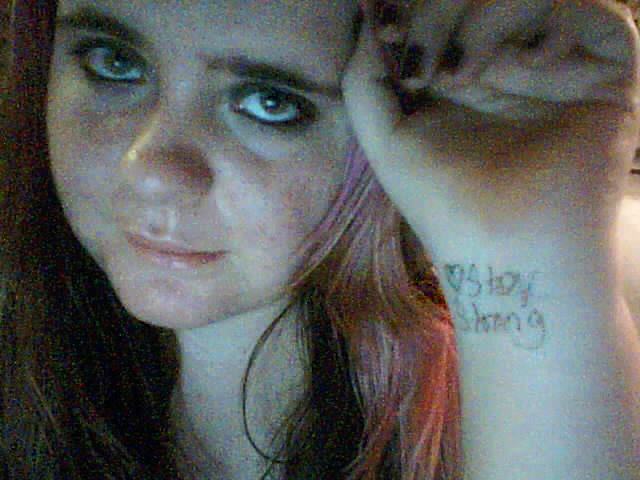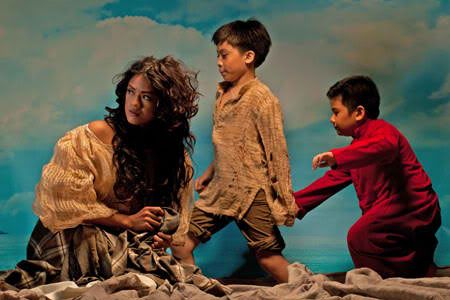Post Traumatic Stress Disorder is a set of characteristic symptoms that develops after being directly or indirectly exposed to a traumatic or terrifying event where a physical harm was threatened, witnessed, or actually experienced. It can also occur after an unexpected or violent death of a family member or a close friend, or after a serious harm or threat of death or injury to a loved one. the people with PTSD often avoid any situations that will remind them of the trauma, but often re-experience the affliction through flashbacks, memories, nightmares, or frightening thoughts especially when they are re-exposed to events or objects that remind them of the trauma. They also feel the Survivor's guilt, the feelings of guilt of having survived the event in which friends or family died.
Causes:
- Assaults such as Rape
- Fire
- Physical or Sexual abuse
- Senseless acts of violence (school and neighborhood shootings)
- Natural disasters (flood, earthquake, volcanic eruption)
- Car accidents
- Military combat (often called "shell shock")
- Witnessing another person experiencing these kinds of traumatic events
- Diagnoses of life-threatening medical illness
- Psychological/mental abuse
- Negligence
- Friend's or family member's suicide
Risk Factors:
- Severity of the trauma
- Social support
- Levels of cortisol, norepinephrine, and epinephrine - Important for the "Fight-or-flight" response of the body to stress
- The distance of the child to trauma
- The parent's reaction to trauma
- The number of traumas that the child experience
Signs and Symptoms:
Re-experiencing the event
- recurrent and intrusive (unwanted) memories of the event
- distressing dreams or nightmares of the event
- acting or feeling as though the event were happening again (flashbacks)
- distress and fear when reminded of the event
- physiological reactivity (feeling jumpy, startled, or anxious) when reminded of the event
- avoiding thinking about or talking about the trauma
- avoiding activities, places, or people that are reminders of the event
- no memory of an important aspect of the event
- lack of interest and participation in activities (due to wishing to avoid cues of the event)
- feeling detached or estranged from others
- limited range of emotions
- sense that they will not live to graduate college, get married, have kids, etc.
- difficulty falling or staying asleep
- cranky, irritable, or angry
- problems paying attention or concentrating
- overly aware of noises or other cues that remind them of the event (smells, visual cues)
- exaggerated startle response
Cognitive-Behavioral Therapy (CBT)
CBT is the most effective approach for treating children. One type of CBT is called Trauma-Focused CBT (TF-CBT). In TF-CBT, the child may talk about his or her memory of the trauma. TF-CBT also includes techniques to help lower worry and stress. The child may learn how to assert him or herself. The therapy may involve learning to change thoughts or beliefs about the trauma that are not correct or true. For example, after a trauma, a child may start thinking, "the world is totally unsafe."
Some may question whether children should be asked to think about and remember events that scared them. However, this type of treatment approach is useful when children are distressed by memories of the trauma. The child can be taught at his or her own pace to relax while they are thinking about the trauma. That way, they learn that they do not have to be afraid of their memories. Research shows that TF-CBT is safe and effective for children with PTSD.
CBT often uses training for parents and caregivers as well. It is important for caregivers to understand the effects of PTSD. Parents need to learn coping skills that will help them help their children.
Psychological first aid/crisis management
Psychological First Aid (PFA)
Used with school-aged children and teens that have been through violence where they live. PFA can be used in schools and traditional settings. It involves providing comfort and support, and letting children know their reactions are normal. PFA teaches calming and problem solving skills. PFA also helps caregivers deal with changes in the child's feelings and behavior. Children with more severe symptoms may be referred for added treatment.
Eye movement desensitization and reprocessing (EMDR)
EMDR combines cognitive therapy with directed eye movements. EMDR is effective in treating both children and adults with PTSD, yet studies indicate that the eye movements are not needed to make it work.
Play therapy
Play therapy can be used to treat young children with PTSD who are not able to deal with the trauma more directly. The therapist uses games , drawings, and other methods to help children process their traumatic memories.
Other treatments
Special treatments may be needed for children who show out-of-place sexual behaviors, extreme behavior problems, or problems with drugs or alcohol.
The Parent's Role
Most kids will need a period of adjustment following a stressful event, so during this time, it's especially important for parents to offer support and love, and to monitor their kids carefully.
- Let them talk about the traumatic event when and if they feel ready. It's important not to force the issue if kids don't feel like sharing their thoughts. Praise them for being strong when they do talk about it. Your child may prefer to draw or write about their experiences. Either way, encouragement and praise can help your child get their feelings out.
- Reassure them that their feelings are normal and that they're not "going crazy." Support and understanding from parents can help kids process difficult feelings.
- Some kids find it very helpful to get involved in a support group for trauma survivors. Check with your pediatrician, school, or local library to find groups nearby.
- Get professional help immediately if there's any suspicion that a child has thoughts of self-harm. Thoughts of suicide are serious at any age and require prompt and effective intervention.
- Help build self-confidence by encouraging kids to make everyday decisions whenever appropriate. PTSD can make a child feel powerless, so parents can help by showing their kids that they have control over certain aspects of their lives. Depending on their children's ages, parents might consider letting them decide things like what's for dinner, what to wear, or select a weekend activity.
- Tell them that the traumatic event is not their fault. Encourage kids to talk about their feelings of guilt, but don't let them blame themselves for what happened.
- Stay in touch with caregivers. It's important to talk to teachers, babysitters, and other people who care for kids with PTSD.
- Do not criticize regressive behavior (returning to a previous level of development). If children want to sleep with the lights on or take a favorite stuffed animal to bed, it's perfectly normal and can help them feel better.
- Also, take care of yourself. Helping your child cope with PTSD can be very challenging and may require a lot of patience and support. Time does heal, and getting good support for your family can help everyone get past difficult life events.
x
Source: Kidshealth, ptsd.va.gov
Credit: PTSD in Children


















































